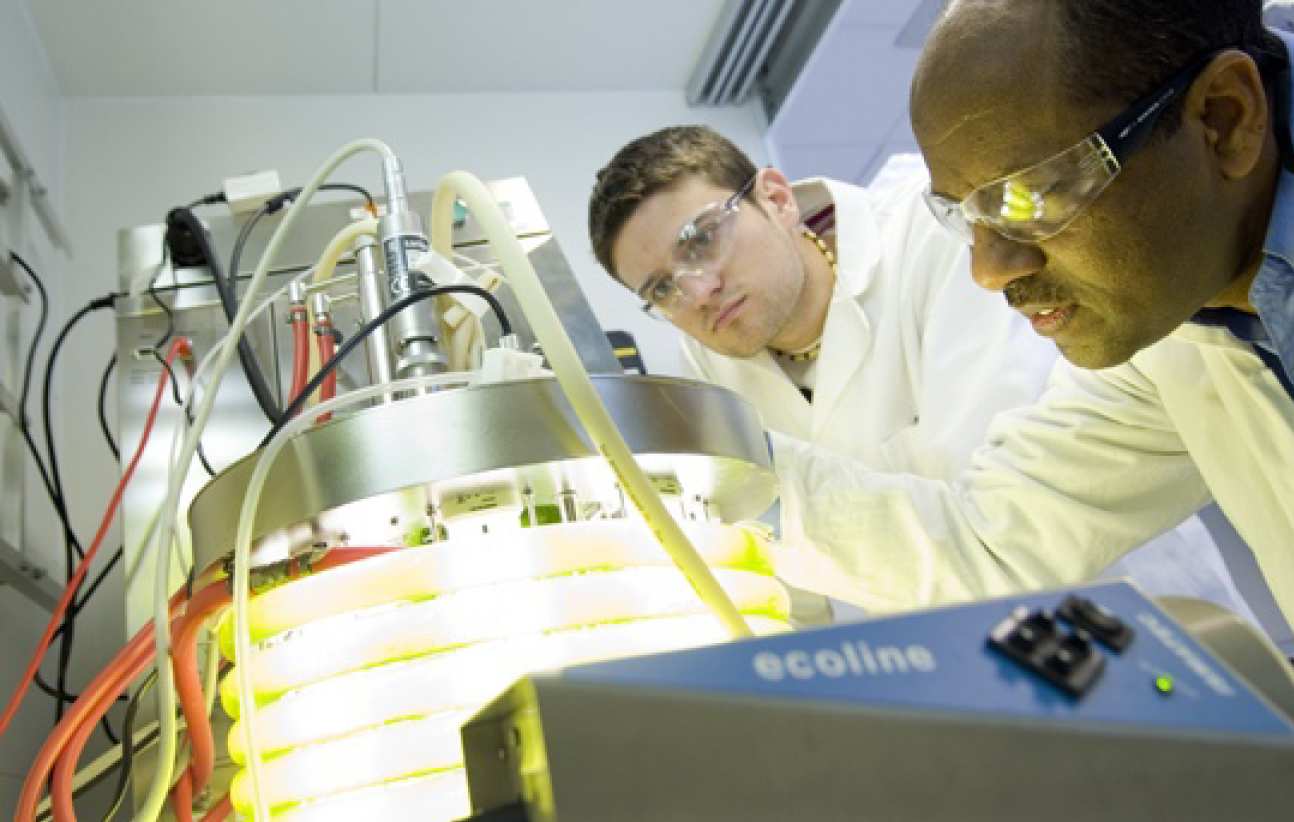Research Case Study - Solar Routes to Hydrogen
The UK, together with the international community, is acutely aware of the problems arising from the unsustainable use of fossil fuels, and is increasingly focusing on the development of zero-carbon emission fuels, particularly hydrogen, using renewable energy sources. Of the renewable energy sources under consideration, solar energy is the most abundant and, if harvested efficiently, is capable of meeting global energy needs for the foreseeable future.
Much solar energy research is focused on its direct conversion to electricity in photovoltaic devices, or on its direct conversion to heat in solar thermal devices. A major barrier to all these 'conventional' routes is their prohibitive cost.
Here, we propose to exploit low-temperature natural biological and photocatalytic processes to develop alternative, and cost effective, methods for harvesting solar energy. These methods can then be used to produce renewable hydrogen fuels directly, and to explore how these could be embedded within novel, integrated energy production systems, incorporating fuel cell and hydrogen storage technology.

The successful scale-up of these solar energy-driven renewable hydrogen generation processes would transform the supply of carbon-less fuel and make an enormous impact on the viability of hydrogen as an energy carrier.
It will convert the potential to produce hydrogen in a carbon-free, renewable way into a process reality, and is an essential step on the route to fully exploiting fuel cell technology.
It will position the UK as a world leader in one of the very few solutions to a truly sustainable energy future. As such, the impact is wide ranging scientifically, technologically and commercially.
The project aims to develop materials and technologies for the enhanced production of hydrogen from water using solar energy to drive the process. The biological process will optimise bio-hydrogen production from a green alga that is closely related to higher plants.
The oxygen and hydrogen produced will then be separated and the hydrogen stored, ready for use in a fuel cell. The chemical process will use photo-electrodes to directly split water into molecular oxygen and hydrogen using both inorganic electrodes and molecular catalysts whose function will mimic the water oxidation enzyme of plant photosynthesis.